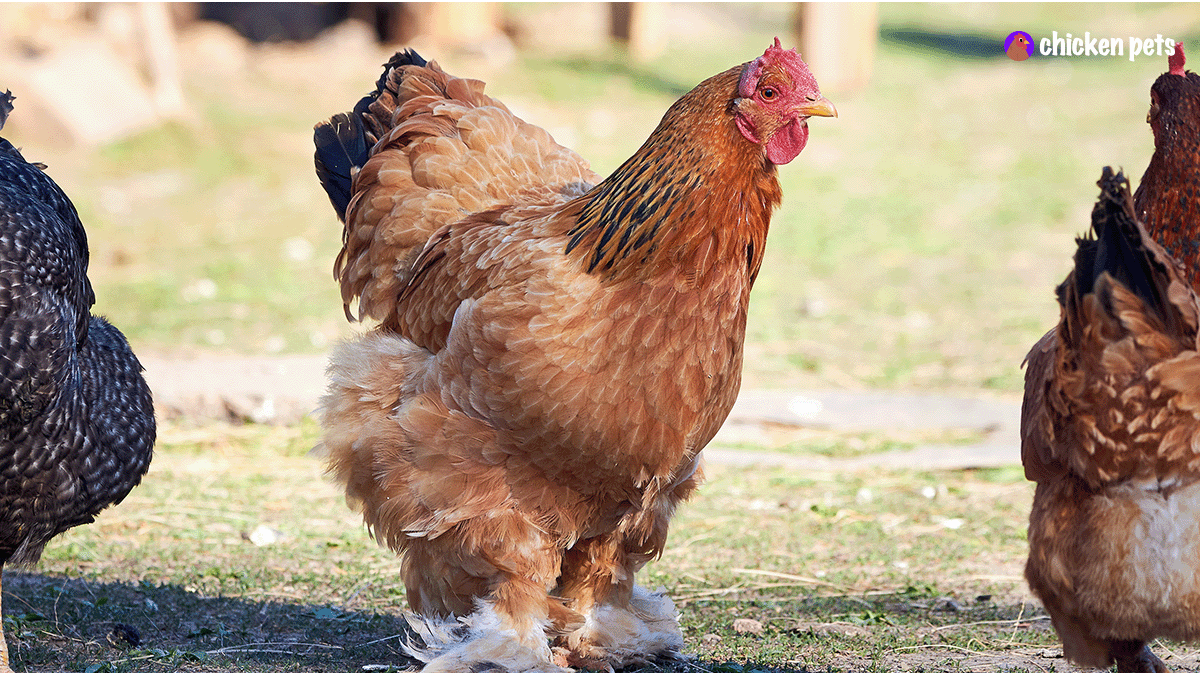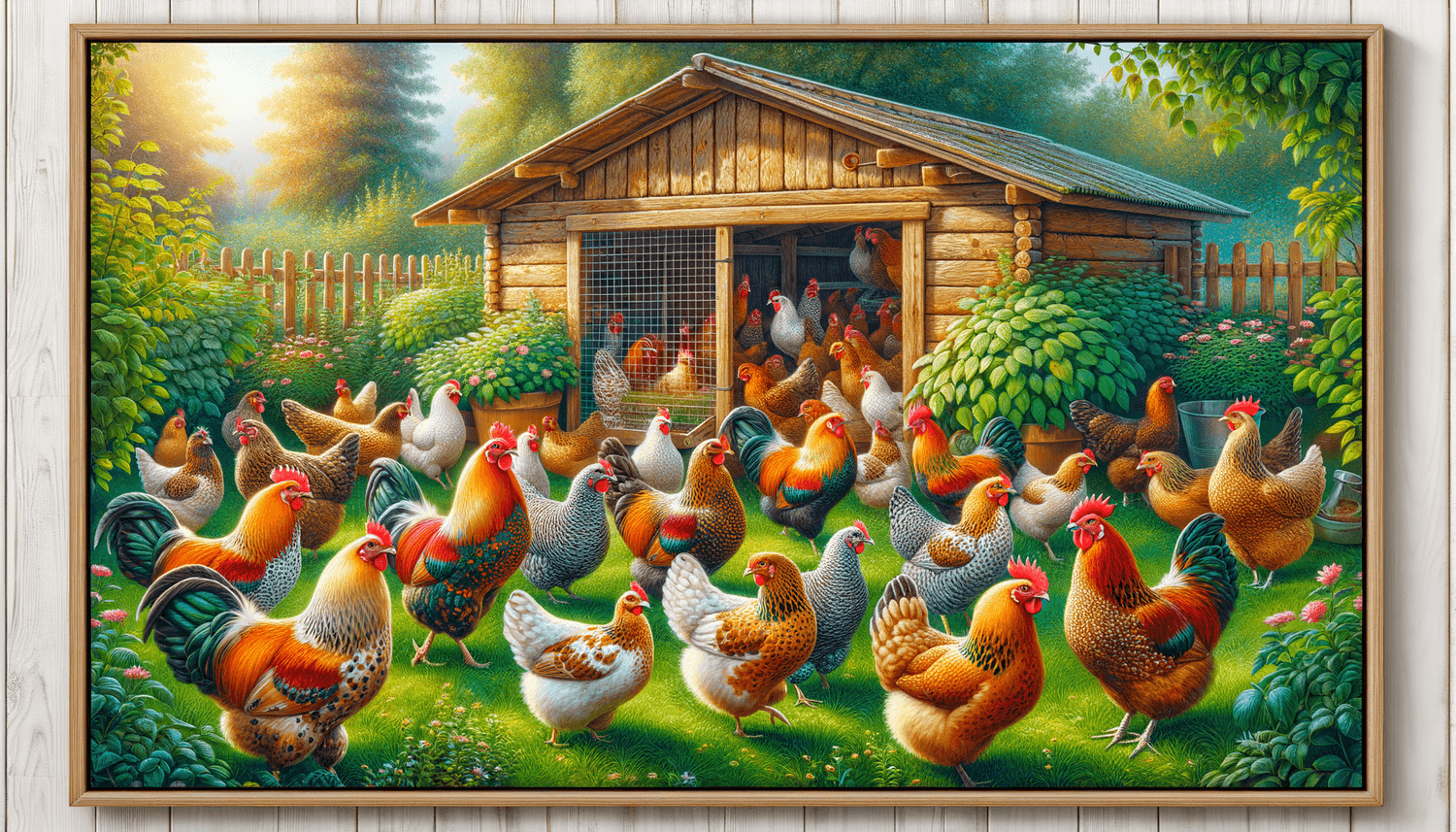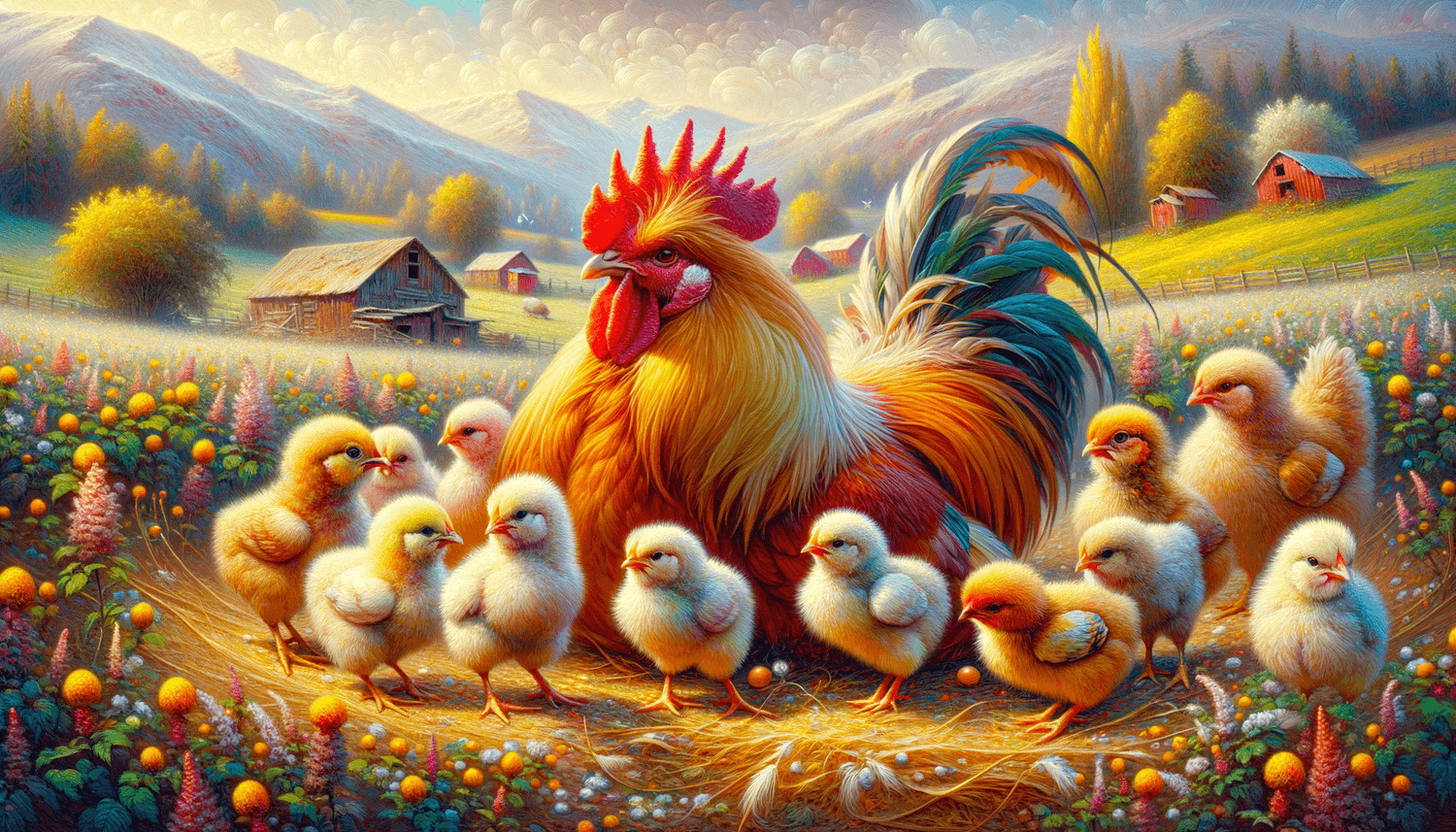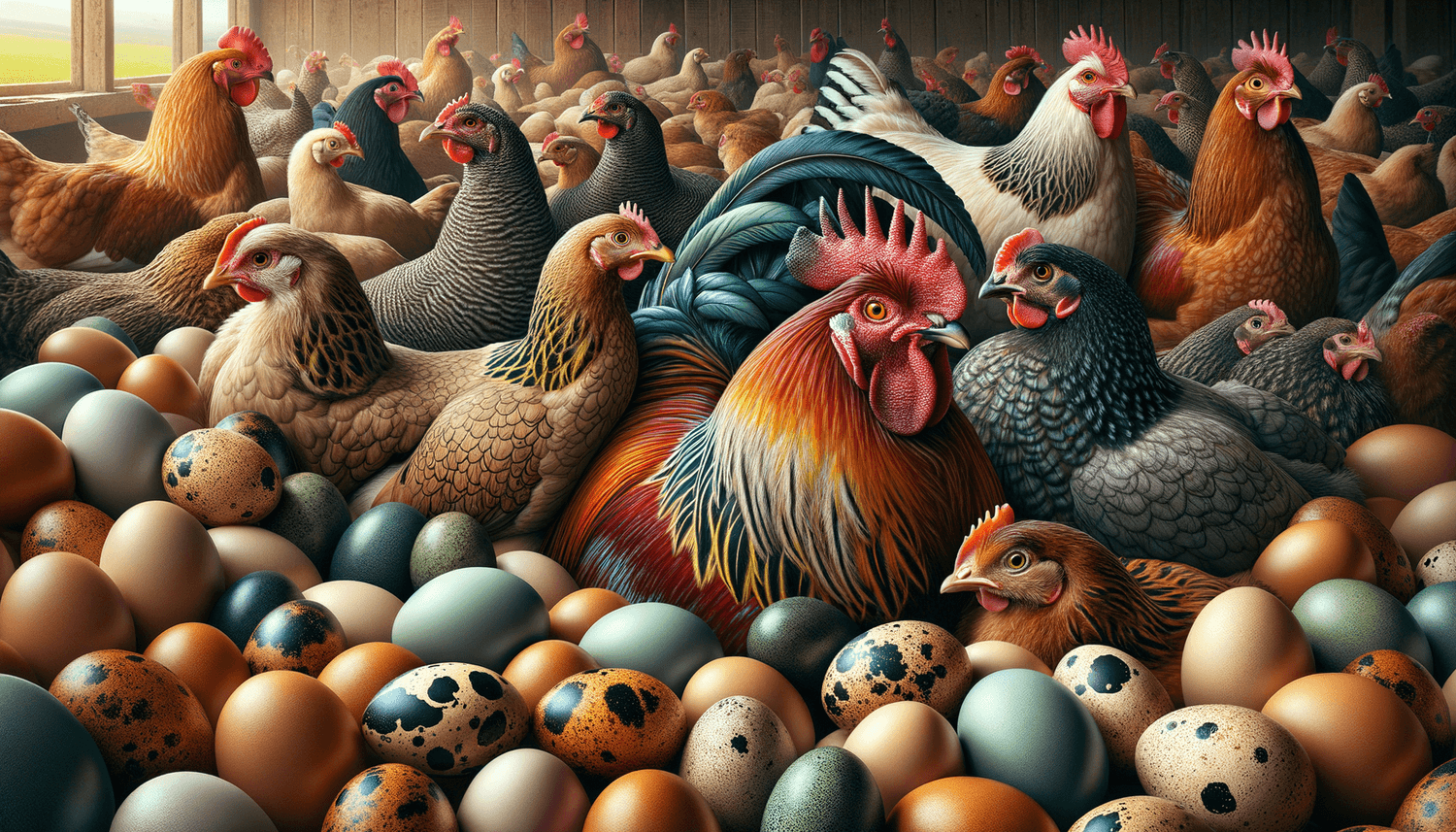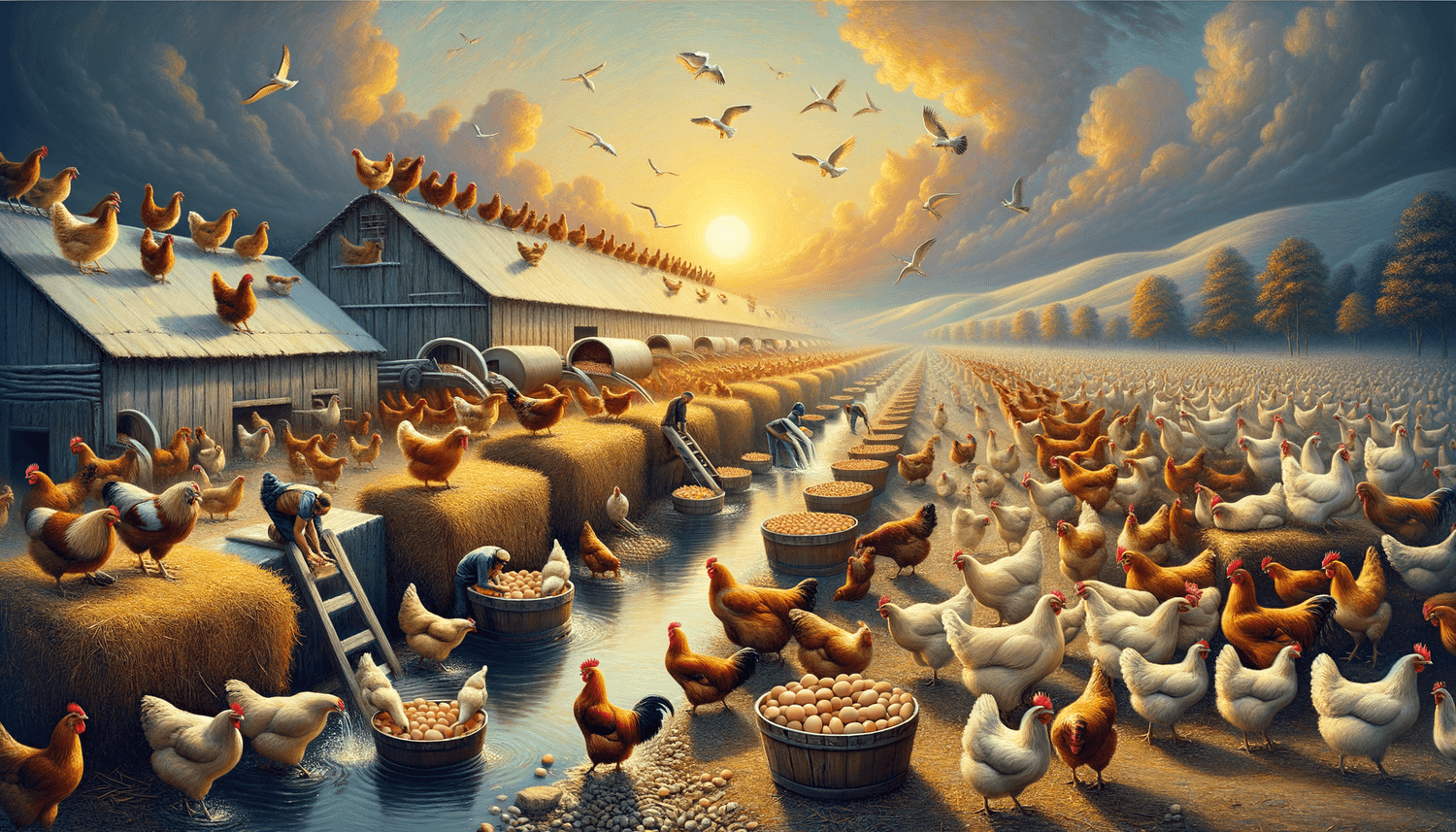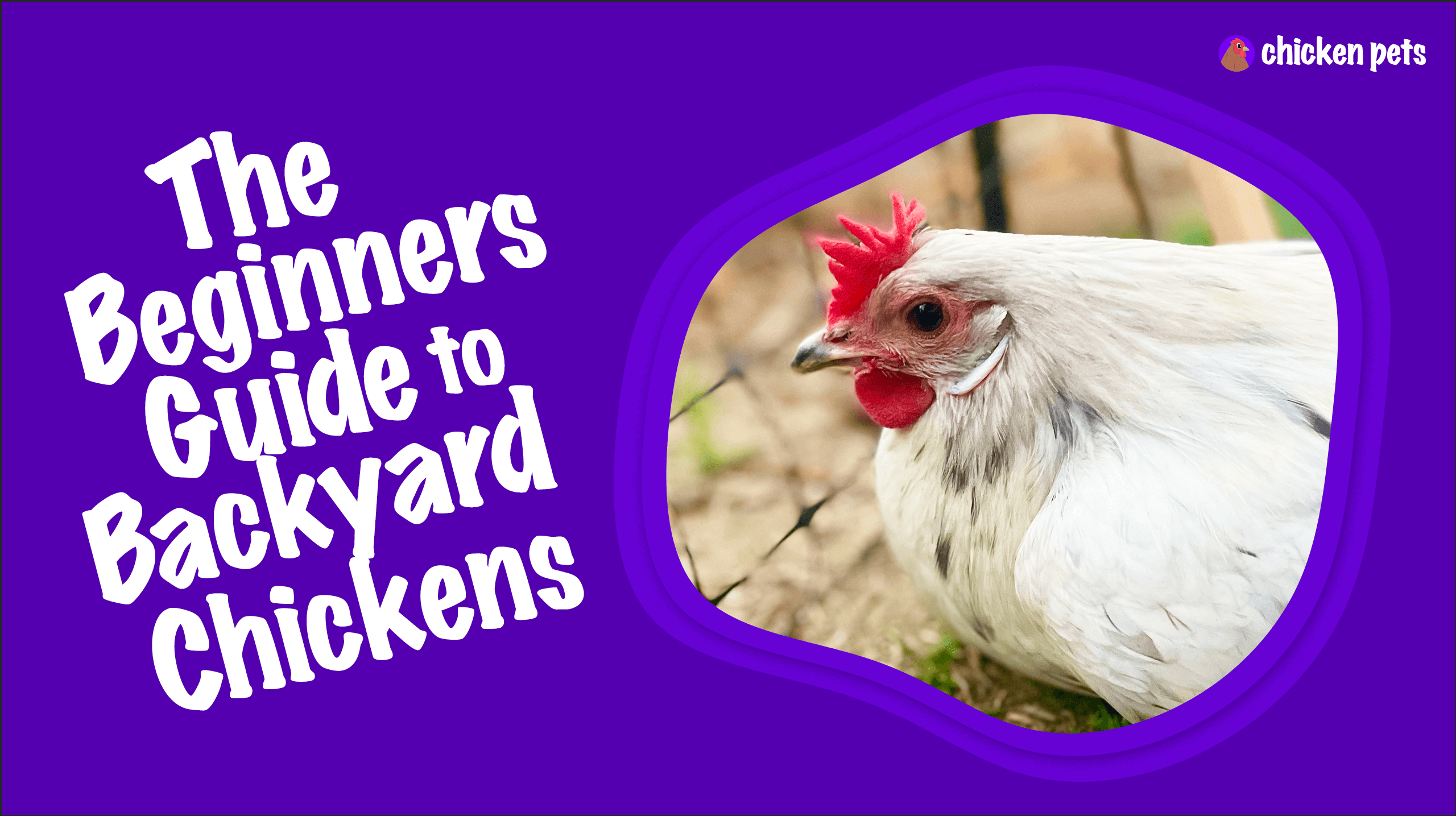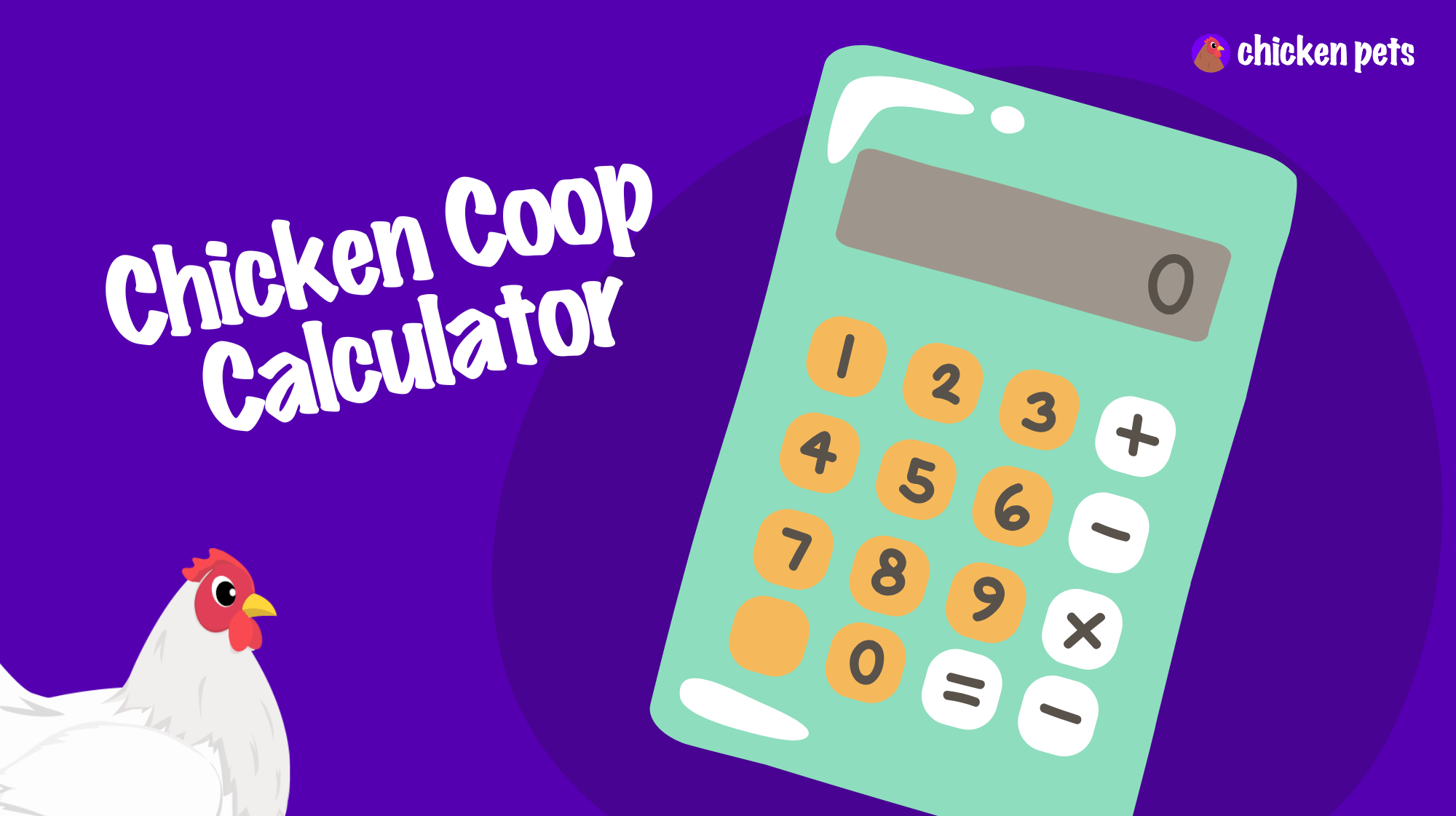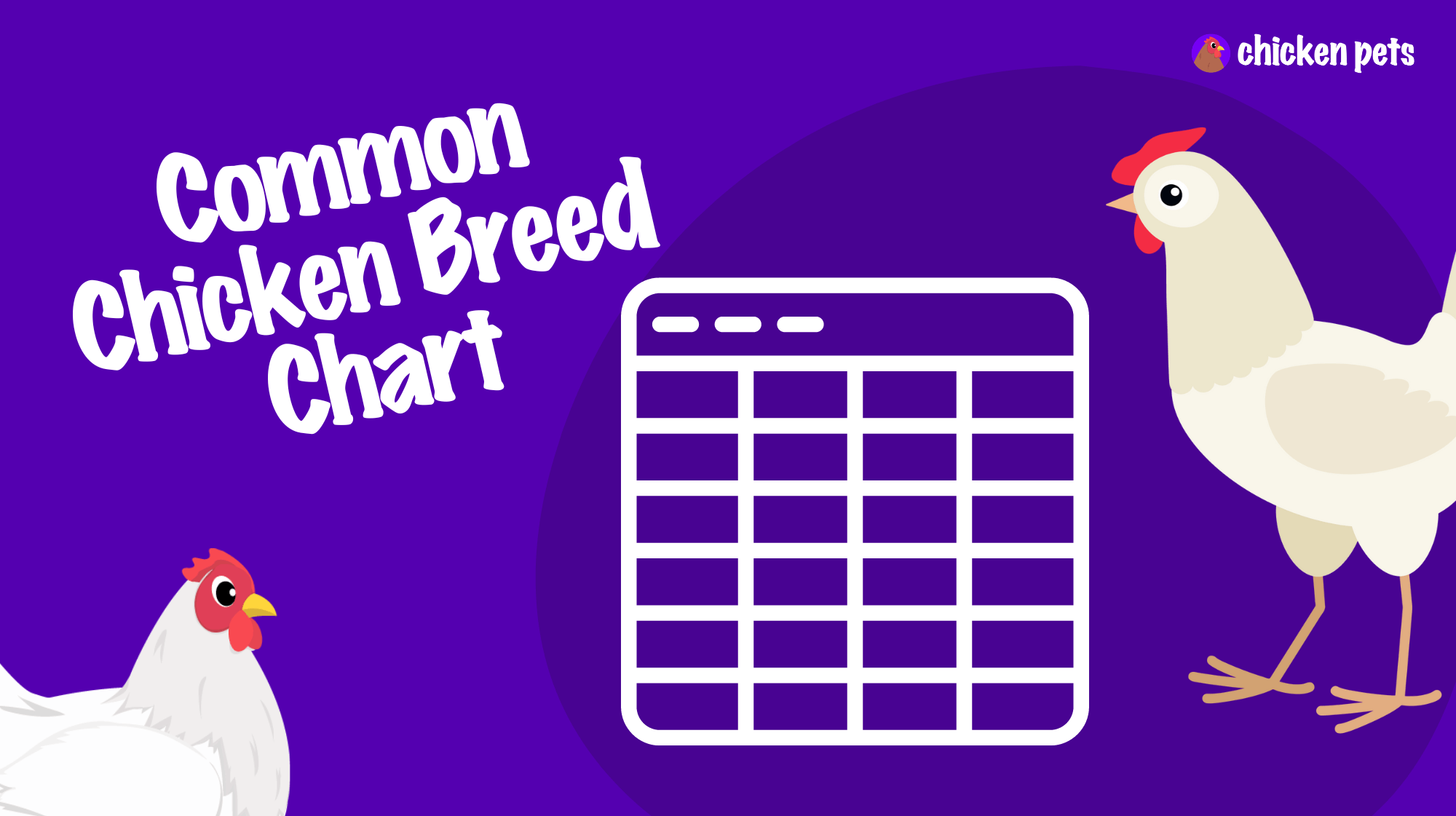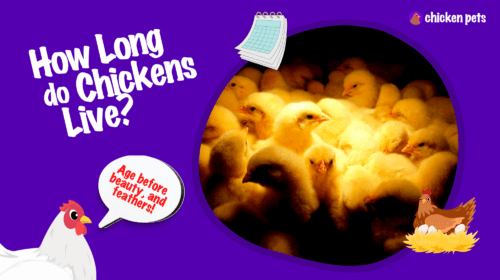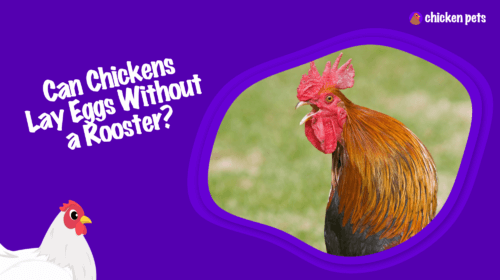What are Brahma chickens?
Brahma chickens are famous backyard chicken keepers due to their distinctive appearance and excellent egg-laying ability. In this article, we will cover the characteristics and appearance of Brahma chickens, their egg-laying ability, their temperament and personality, and how to care for them in your backyard.
We will also discuss the pros and cons of having Brahma chickens as pets and offer our conclusion on whether or not they are the right breed for you.
If you’re looking for a low-maintenance, friendly, and intelligent chicken breed that is both an excellent food source and pet, then the Brahma chicken may be the perfect fit. But what exactly is a Brahma chicken, and where did it come from?
A Brahma chicken is a large, heavy breed developed in the United States in the mid-19th century. It was originally a cross between the Cochins, Shanghai, and Langshans chicken breeds and was named after the Hindu god Brahma because of its majestic appearance. The Brahma chicken is known for its calm and gentle nature, as well as its intelligence and ability to be easily trained.
Brahma chickens have appeared in pop culture, including the classic children’s book “Charlotte’s Web,” in which the protagonist, Wilbur the pig, befriends a Brahma chicken named Joyce. They have also been featured in various TV shows and movies, such as “The Beverly Hillbillies” and “The Chicken from Outer Space.”
Benefits of Owning a Brahma Chicken.
There are many benefits to owning a Brahma chicken. For starters, they are a low-maintenance breed, as they are hardy and able to withstand cold temperatures. They are also known for their friendly temperament and intelligence, making them an excellent choice for first-time chicken owners or those looking for a more interactive pet.
In addition to being a great pet, Brahma chickens are also a versatile food source. They are known for their rich egg production, even in the winter, and their meat is tender and flavorful. They may not be as efficient at converting feed to meat as other chicken breeds, but their large size and good egg production make up for it.
Characteristics and Appearance of Brahma Chickens.
Brahmas are a large, gentle chicken breed known for their distinctive appearance. They have large, muscular bodies with feathers in various colors, including black, blue, buff, and white. They also have long, feathered legs and a large, distinctive comb on their head.
| Fact | Description |
|---|---|
| Size | Large breed can weigh up to 18 pounds |
| Egg production | Good layers, producing large brown eggs |
| Temperament | Calm and docile, friendly, and great for families and children |
| Feeding | Require a balanced diet of protein, carbohydrates, and minerals |
| Space requirements | Need more space than smaller breeds, at least 4 square feet per bird inside the coop and 8-10 square feet per bird in the run |
| Life span | Can live for several years with proper care |
| Special care | Do not require special care beyond what is necessary for all chickens |
| Egg-laying age | Usually start laying eggs around 6-8 months of age |
| Cold tolerance | Can tolerate cold weather but need protection from extreme temperatures |
| Heat tolerance | Can tolerate hot weather but need protection from extreme temperatures |
| Suitable for beginners | Yes, they are easy to care for and have a calm, docile nature |
| Color | Feathers can vary from light to dark shades of gray, black, white, and even blue. |
| Egg color | Large brown eggs |
| Grooming | Do not require regular grooming, but it should be checked for parasites and mites occasionally. |
The Egg-Laying Ability of Brahma Chickens.
Brahma chickens are known for their prolific egg production. They can lay up to 200 eggs annually, making them an excellent choice for those looking to have a steady supply of fresh eggs.
Temperament and Personality of Brahma Chickens.
Brahma chickens are known for their calm and docile personalities. They are not aggressive and are generally quite easy to handle. They are also relatively quiet, making them a good choice for those who live in urban or suburban areas.
How to Care for Brahma Chickens in Your Backyard.
Caring for Brahma chickens in your backyard is relatively simple. These chickens are hardy and can tolerate a wide range of temperatures, so they don’t require special housing or equipment.
However, they require a well-balanced diet of quality chicken feed, fresh water, and occasional treats like mealworms or fruits and vegetables.
Pros and Cons of Having Brahma Chickens as Pets.
There are both pros and cons to having Brahma chickens as pets. On the plus side, they are gentle and easy to handle, and they can provide you with a steady supply of fresh eggs.
On the downside, they are significant and can be difficult to contain if you don’t have a large enough coop or enclosure.
Additionally, they can be prone to health issues if not correctly cared for, so it’s essential to be prepared to provide them with the necessary care and attention.
Brahma Chicken FAQ.
How big do Brahma chickens get?
Brahma chickens are considered a large breed, so that they can get quite big! Adult hens weigh around 8-10 pounds, while roosters can weigh up to 12 pounds. They have a distinctive fluffy, feathery appearance and a calm, docile nature.
What do Brahma Chickens eat?
Brahma chickens are not picky eaters and will eat a variety of food. They should be fed a diet that includes a high-quality layer of feed, providing them with all the necessary nutrients to grow and lay eggs. They also enjoy fresh fruits, vegetables, mealworms, and other insects.
Do Brahma Chickens lay eggs?
Brahma chickens are excellent layers and produce large brown eggs, usually one per day. They typically start laying eggs around 6-8 months of age.
Are Brahma Chickens good pets?
Brahma chickens make great pets as they are friendly, docile, and easy to handle. They are also known for their calm personalities and can be quite affectionate with their owners. They are also great for children who are interested in learning about chickens.
How long do Brahma chickens live?
The average lifespan of a Brahma chicken is around 8-10 years, provided they are given proper care and a healthy diet.
Are Brahma Chickens prone to disease?
Like all chicken breeds, Brahma chickens can be prone to certain diseases and illnesses without proper care and a healthy diet. It is crucial to keep their coop clean and dry, provide them with adequate nutrition, and watch for signs of illness.
How much does a Brahma chicken eat?
An adult Brahma chicken will eat about 3/4 to 1 cup of chicken feed daily. Please remember that this can change depending on the chicken’s size, weight, and age.
Are Brahma Chickens noisy?
Brahma chickens are quiet and make some noise when they lay an egg, during mating season or when they are happy. They are considered to be calmer than some other chicken breeds.
Do Brahma Chickens need special care?
Brahma chickens only require special care beyond what is necessary for all chickens. They need a clean and dry coop, fresh food and water, and protection from predators. They also need to be protected from extreme temperatures and to have access to a run or open space to forage.
What are Brahma chickens good for?
Brahma chickens are extraordinary for both meat and eggs. Their large size and docile nature make them great for meat production. They also lay large brown eggs, which are delicious and nutritious. They also make great pets for families and children interested in learning about chickens.
What to do if Brahma eggs hatch early?
If Brahma eggs hatch early, it is essential to care for the chicks properly. This includes keeping them warm, providing them with food and water, and protecting them from predators. It is also vital to ensure the chicks get enough food and water and that the coop is clean and dry.
Is a Brahma chicken a dinosaur?
No, a Brahma chicken is not a dinosaur; it is a domesticated bird that is raised for its meat and eggs.
Are Brahmas suitable for beginner chicken keepers?
Brahmas are suitable for beginner chicken keepers because they are easy to care for and have a calm, docile nature. They do not require special care beyond what is necessary for all chickens, and they are also excellent for families and children interested in learning about chickens.
Do Brahmas need a lot of space?
Brahmas are large, so they need more space than smaller breeds. They should have access to a coop and a run or open space to forage. A good rule of thumb is to provide at least 4 square feet per bird inside the coop and 8-10 square feet per bird in the run.
Are Brahmas good with other animals?
Brahmas are generally friendly and docile and get along well with other animals. They can be kept with chickens, ducks, turkeys, and other farm animals such as sheep and goats.
How do I introduce a Brahma into my existing flock?
When introducing a Brahma chicken to an existing flock, it is vital to do so gradually. First, keep the new bird separate from the current flock for a few days to allow them to get used to each other’s scent. Then, monitor their interactions and introduce the new bird to the flock in a neutral space, such as a coop or run.
Do Brahmas need bathing?
Brahmas do not need regular bathing, but they do enjoy dust baths. A dust bath is a shallow hole filled with sand or fine dirt. Chickens will roll around in the dust, which helps to remove dirt, parasites, and oils from their feathers.
Are Brahmas good egg layers?
Brahmas are considered good layers and lay large brown eggs, usually one per day. They typically start laying eggs around 6-8 months of age.
Can I keep a Brahma chicken inside my house?
Keeping a Brahma chicken inside your house is not recommended; they need fresh air, sunlight, and space to move around. Keeping them in a coop and run or a spacious backyard is best.
Do Brahmas require exceptional food?
Brahmas do not require exceptional food but a high-quality diet with a balanced mix of protein, carbohydrates, and minerals. They should be fed a diet consisting of a high-quality layer of feed, providing them with all the necessary nutrients to grow and lay eggs. They also enjoy fresh fruits, vegetables, mealworms, and other insects.
Do Brahma Chickens need to be groomed?
Brahmas do not require regular grooming, but they do need to have their feathers checked for parasites and mites occasionally. They should also be checked for any signs of injury or illness.
Are Brahma chickens high maintenance?
Brahma chickens are generally low maintenance and only require special care beyond what is necessary for all chickens. They need a clean and dry coop, fresh food and water, and protection from predators. They also need to be protected from extreme temperatures and to have access to a run or open space to forage.
What Colour eggs do Brahmas lay?
Brahma chickens lay large brown eggs.
Are Brahma chickens suitable for beginners?
Brahmas are suitable for beginner chicken keepers because they are easy to care for and have a calm, docile nature. They do not require special care beyond what is necessary for all chickens, and they are also excellent for families and children interested in learning about chickens.
Do Brahmas like to cuddle?
Brahmas are known to be friendly and docile, they are not as cuddly as some other chicken breeds, but they can be quite affectionate with their owners. They are also great for children who are interested in learning about chickens.
Are Brahmas noisy?
Brahmas are not particularly noisy, and they do make some noise when they lay an egg, during mating season or when they are happy. They are considered to be quieter than some other chicken breeds.
What is Brahma’s favorite food?
Brahmas are not picky eaters, but they enjoy fresh fruits and vegetables, mealworms, and other insects. They should be fed a diet that includes a high-quality layer of feed, providing them with all the necessary nutrients to grow and lay eggs.
Are Brahmas intelligent?
Brahmas are considered intelligent birds, known to be easy to train, and they can learn quickly. They also have a calm and docile nature, making them great for families and children interested in learning about chickens.
Do Brahmas need heat in winter?
Brahmas are hardy birds and can tolerate cold weather, but they do need to be protected from extreme temperatures. They need a dry and well-ventilated coop and access to a protected run or open space to forage. They also need access to a heat source, such as a heat lamp, if the temperature drops below freezing.
Do Brahmas lay every day?
Brahmas are considered good layers and produce large brown eggs, usually one per day. They typically start laying eggs around 6-8 months of age.
Can you bathe a Brahma chick?
It is not recommended to bathe a Brahma chick as it can be stressful for the chick and can cause hypothermia. Instead, you can provide them with a dust bath which is a shallow hole filled with sand or fine dirt. Chickens will roll around in the dust, which helps to remove dirt, parasites, and oils from their feathers.
How much is a Brahma chicken worth?
The price of a Brahma chicken can vary depending on several factors, such as location, age, and sex. A Brahma chicken can cost anywhere from $5 to $20. Keep in mind that the cost of raising a chicken also includes the cost of feed, housing, and veterinary care.
How cold is too cold for Brahma chickens?
Brahmas are hardy birds and can tolerate cold weather, but they do need to be protected from extreme temperatures. They need a dry and well-ventilated coop and access to a protected run or open space to forage. They also need access to a heat source, such as a heat lamp, if the temperature drops below freezing.
Can you mix Brahmas with other chickens?
Brahmas can be mixed with other chicken breeds, they are known to be friendly and docile, and they get along well with other animals. Monitoring their interactions and ensuring that the flock is getting along well is essential.
How hot is too hot for Brahma chickens?
Brahmas can tolerate hot weather but must be protected from extreme temperatures. They need a well-ventilated coop, shade access, and a water source to keep cool. They also need to be protected from heat stroke, which can occur when the temperature is too high.
Do Brahmas need heat lamps?
Brahmas do not need heat lamps in the summer, but they do need to be protected from extreme temperatures. They need a dry and well-ventilated coop and access to a protected run or open space to forage. They also need access to a heat source, such as a heat lamp, if the temperature drops below freezing.
What to do with Brahmas when it rains?
When it rains, it is essential to ensure that the Brahma chickens have access to a dry and well-ventilated coop. They also need access to a protected run or open space to forage. It is also essential to ensure that their feathers are dry and that they are not getting wet or exposed to cold temperatures.
Conclusion: Is a Brahma the Right Chicken Breed for You?
In conclusion, Brahma chickens can make great pets for those with the space and resources to care for them properly. They are gentle, easy to handle and provide a steady supply of fresh eggs.
However, they require a significant amount of care and attention, so it’s important to consider whether or not they are the right breed for you before committing to keeping them.

